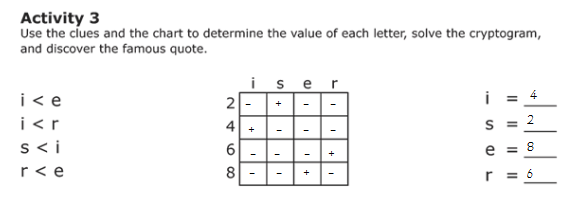 Christian Kids Explore Chemistry
Christian Kids Explore Chemistry
Bright Ideas Press
Price: $39.95 Text with CD
Age: Grades 4th
to 8th
We are science buffs.
With our co-op season coming to an end, I am always looking for ways to
supplement our core subjects until the end of the school year. B-Man is in 9th grade this year
and finished up Biology. Capone is in 7th
and finished General Science.
I love Bright Ideas Press!
I’ve used several of their products over the years and really enjoy the
thought and organization that goes into their curriculum.
The age range for this Christian Kids Explore Chemistry is 4th to 8th
grade. I knew it would too easy for
B-Man, but thought Capone might enjoy it.
Since B-Man is doing chemistry next year – I figured some of the content
would be a good precursor for him.
After spending time with the text, I would have to say that
it fits better on the younger end of the spectrum. Or, would be a good resource for those on the
older end who are not science oriented.
The content is strong, but the experiments and work are fairly
simple. I do love the vocabulary!
As stated before, what appeals to me most about Bright Ideas
is their organization. They have
mastered the use of Adobe Acrobat as a vessel for providing a cohesive, easy to
use platform for using their curriculum.
The Resource CD provides the user with lesson plans, supply
lists, printables from the book, and a study guide for the reading book used in
the later chapters.
The lesson plans provide clear, daily steps for teaching
your student using Christian Kids Explore Chemistry. You
can see how meticulous each plan is showing the parent what to cover, what
resources to use, and where answers can be found. You’ll also note that additional resource
suggestions have been provided to make the experience richer. These resources would be an excellent
addition if you are wanting to use this program with older students and seek to
enhance the depth of their learning!
The Student Activity Book on the CD includes all of
the Review It!, Activity Charts, and Think About It. These are components included in the lessons.
Not all lessons contain all three components, however.
Review It! allows the
student to review the chapter by responding to fill-in-the-blank
questions. I like the fill-in format as
it requires the student to demonstrate knowledge or seek out the correct
answers.
Activity Charts coincide with the activity being completed
for that Lesson. What I do like about
the activities is that they can easily be completed with items you have around
the house. You can see the materials
listed by unit here. Emphasis is placed on observation, which I
feel is a strong technique for students to learn. In some cases, because the activities focus
on using easily accessible items, the activities seemed a little too
rudimentary for upper middle school students.
I would have liked to see some additional emphasis on the scientific
method as well. However, younger students
would be able to complete these experiments with adult supervision and gain
basic understanding of the concepts being presented.

The Think About It section asks questions to engage the student
in thinking about what happened when they completed the activity. Engaging students in critical thinking is excellent! So many students want to simply look up the
answer without having to really consider why something occurs and how it
applies to the world around them.
A Unit is comprised of five or more lessons. You can see the Table of Contents here. At the end of each Unit, the student is asked
to Show What You Know. Accumulative
quizzes are a good way to refresh the students memory about all concepts
covered and to encourage the student to review any ideas that are still
unclear. I like this idea; however, I
would have preferred that these also be fill-in-the-blank as the multiple
choice format doesn’t force the student to think critically as much as it does
allows them to pick the best answer.
This is just a personal preference, however.
I mentioned earlier that each section includes vocabulary. In the sciences, and especially with younger children, understanding difficult vocabulary is critical to understanding the concepts being covered. Having students keep vocabulary cards and later cards for each of the elements is a great hand's-on way to involve them in the text and expand their understanding of scientific terms.
Finally, A Piece of the Mountain by Janice McPherson is incorporated into weeks 26 and 27. I LOVE literature, as you know. Additionally, using historical literature to teach concepts is a great way for students to understand the lives of the people they learn about - in this case, Pascal. The accompanying study guide is very thorough. I haven't had the chance to do with my kids, but the idea is excellent!
I wish I had known about the Christian Kids Explore series
when my boys were younger. These books
are great for upper elementary and lower middle school. They provide strong content, abstract
concepts and application all on a level that kids can understand. To see more examples of the text – click here.
To see reviews from other TOS Homeschool Crew members for
this and the other Christian Kids Explore Science texts – click here.
Disclaimer: I
received this resource free of charge as a member of the TOS Homeschool Crew in
exchange for my honest review.
 “Wahl Heat Therapy Heated Therapeutic Massager has 2 heat
settings, variable power from gentle to intense massage and comes with 9 Home
Physical Therapy Attachments. It has a 9 foot cord for optimal use. The
zippered storage case holds everything you need - no more losing attachments.
(# 4295)”
“Wahl Heat Therapy Heated Therapeutic Massager has 2 heat
settings, variable power from gentle to intense massage and comes with 9 Home
Physical Therapy Attachments. It has a 9 foot cord for optimal use. The
zippered storage case holds everything you need - no more losing attachments.
(# 4295)” The heated attachment
is wonderful for those sore muscles earned while exercising. It takes about five minutes to heat up, and
you have to check to make sure the temperature works for you, but the heat
combined with the massage really helps loosen those sore muscles!
The heated attachment
is wonderful for those sore muscles earned while exercising. It takes about five minutes to heat up, and
you have to check to make sure the temperature works for you, but the heat
combined with the massage really helps loosen those sore muscles!






.jpg)
.jpg)





















